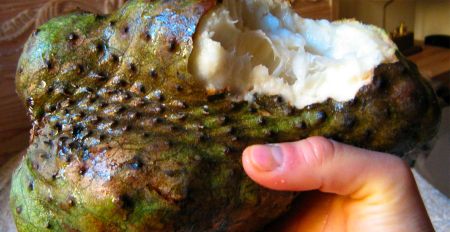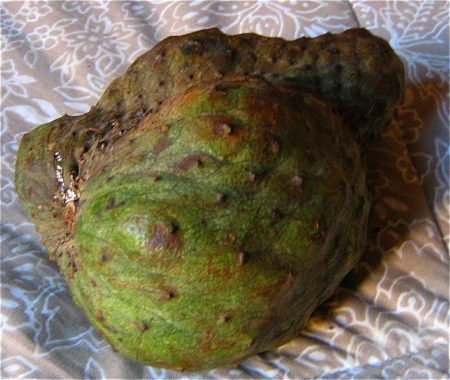There are a lot of places in Lima a single female gringo (foreigner) should not go alone. Basically I can walk around my neighbourhood between the hours of 9am and 6pm, but if I walk for more than 30 minutes in any direction I need to consider what I’m wearing, who I’m with, how much money I’m carrying, and watch over my shoulder. That’s not mentioning the traffic which stops for nobody.
But the places I’m not supposed to go on my own are the more interesting places, so I recruited a Limena that I met at the airport to show me around. Where did I want to go? she asked. To the market.
There are a few markets in the city but the one closest to my hotel and open daily is the Mercado Surquillo. It has home items, cleaning supplies, toys, everything for everyday life in Lima, some tourist stuff, but mostly it’s a fresh fruit, vegetable, meat, cheese, and fish market that supplies local restaurants and Limenans looking for better prices on better quality items than the local grocery stores and corner shops (and the latter purchase their produce here anyway).
As great as the mercado is, even the locals don’t come here after 5pm. So one bright and sunny morning my friend and I set off (me wearing jeans and a t-shirt – no shorts, camera, wallet, handbag, credit cards, or a lot of cash since I already stick out like a sore thumb and am basically permanently wearing a sign that says “Easy prey. Please steal from me”) for the market in search of tropical fruit.
Wow.
The market is a mess of street vendors, women crocheting, knitting, reaching out their hands at you and asking if you want to buy some socks for your kids, or a multi-coloured poncho that weighs more than you do, or some jewelry for your hair, or a bowl of wonton soup or egg and meat-stuffed pastry. Once you get inside the market building, however, you’ve stepped into the urban jungle, and it’s filled with grenadillas, mangoes, papayas, cherimoyas, ciruelas, lucumas, baby limes (my world for them, not the real one), strange apples, bananas that are light pink inside and not quite round outside, grapes, pineapples, white peaches, plums, and other jungle fruit including camu camu and guanabana.
You’ll also see purple maize, white corn (giant kernels that aren’t nearly as sweet as North American yellow corn. the white South American variety is what’s most often used to make tamales and steamed lightly to serve with ceviche dishes), so many potatoes, tons of varieties or fresh, dried, and ground chili peppers, herbs that I didn’t even ask the name of because there was no way I could remember so many or understand what they were for, and salsas made from either cilantro or rocoto or aji amarillo chili peppers to be served with fried tortillas and meat.
Then there were the hanging pieces of cow. Huge slabs of barely butchered meats were suspended from the tops of stalls that stretched in 100 metre rows winding through the circular building. There were hooves, shanks, and hocks galore. Then around the corner were long displays of fresh fish (everything from tuna to tilapia, to more common Peruvian fish such as corvina – no prices listed), filleted and whole, enormous shrimp, the largest mussels I’d ever seen, and absolutely no smell to any of it. No flies circling around the dead flesh; this fish and meat was incredibly fresh.
After making it through the entire building we chose a fruit vendor and started buying one of everything I’d never had before. The woman gave us a few samples (though we only tried the ones you have to peel since you definitely don’t put this fruit in your mouth without washing it first) and generally seemed amused at our fascination and our desire to purchase only one of each thing, not a kilo, or a half a kilo. she didn’t really smile at me, but my friend’s young daughter had all the market vendors oohing and awing, and so I guess the vendor figured I was good enough to sell her fruit to, since I had a friend with such a lovely child.
A guanabana or a chermimoya…I can’t tell. They’re similar, I think. One is a little spikier.
1 cherimoya (white flesh that flakes like perfectly cooked fish when you pull it apart with a fork and becomes creamy the more you chew it), 1 papaya (still tasted like nothing), 5 ciruela (these are NOT cherry tomatoes but look a lot like them. Instead they are bursting mouthfuls of sweet and sour juice that you just have to try since I can’t think of anything they’re like), 1 mango (like the Brazilian vine-ripened kind you can find in Montreal, but this one cost me the equivalent of 30 cents Canadian. It was the best I’ve ever eaten in my life. I ate it with a fork because it was so perfectly ripe. Dear lord it was so sweet and amazing…), 3 grenadillos (the orange outside hides a grey inside full of strangely sweet, pulpy seeds that make the mouthful bitter when you bite into them. It makes amazing juice), and one ridiculously ripe, buttery, rich lucuma since it is the season.
All for a grand total of 28 soles (about $9.50 Canadian…) Inside the guanabana or cherimoya
Inside the guanabana or cherimoya
So I was eating a lot of fruit for a few days. Fortunately, I can’t go out at night on my own have been too tired to be social with the other people here for the percussion festival I’m playing in (the real reason I’m in Peru) since I can’t sleep in the horrible, muggy, sticky pollution. A permanent sinus headache, tired, scratchy eyes, and probably a bit of heat stroke in the last few days keeps me in my well-fruit-stocked hotel room more often than it should.
But that is slowly changing. I went out on my own again yesterday. It’s actually a rush to be out on my own. Kind of like breaking the rules. Tomorrow I’ll venture to a popular cevicheria in search of tiger’s milk, the only milk I can have.

Leave a Reply